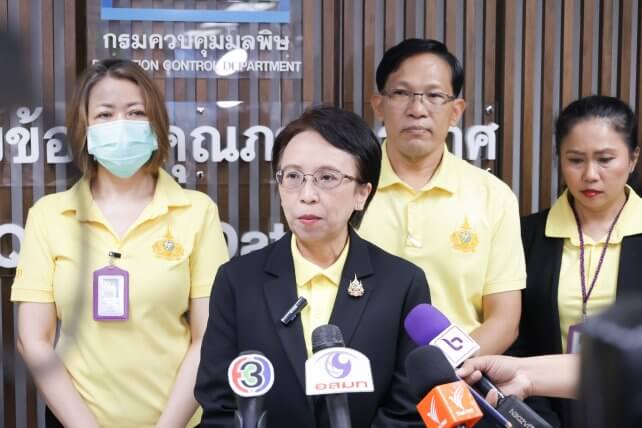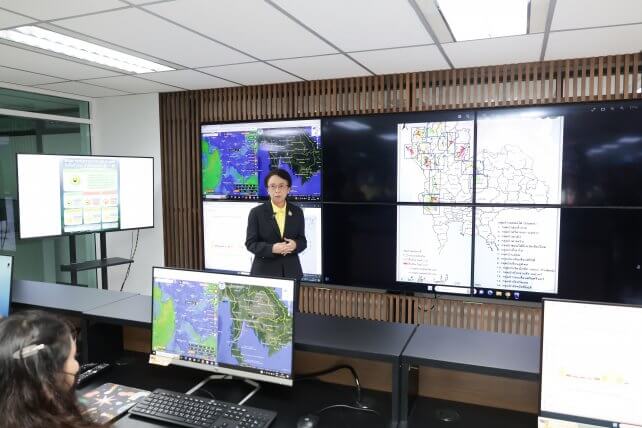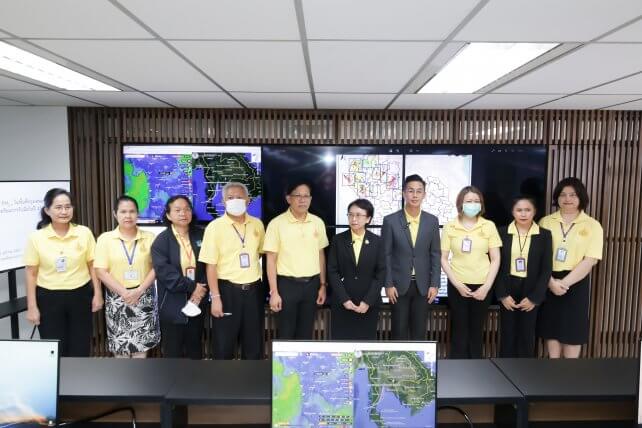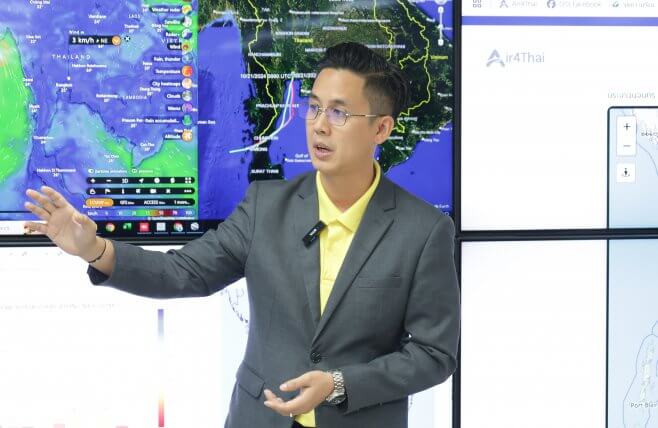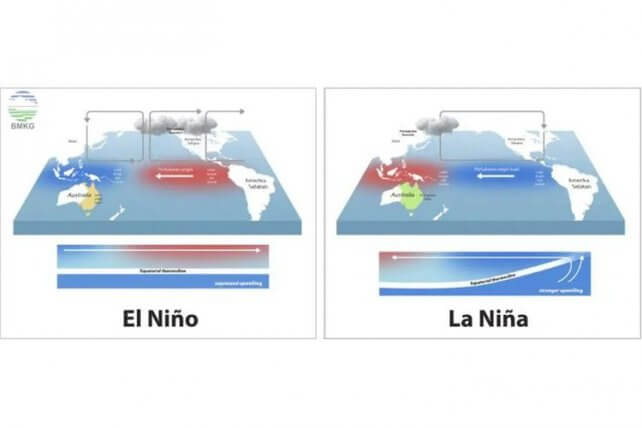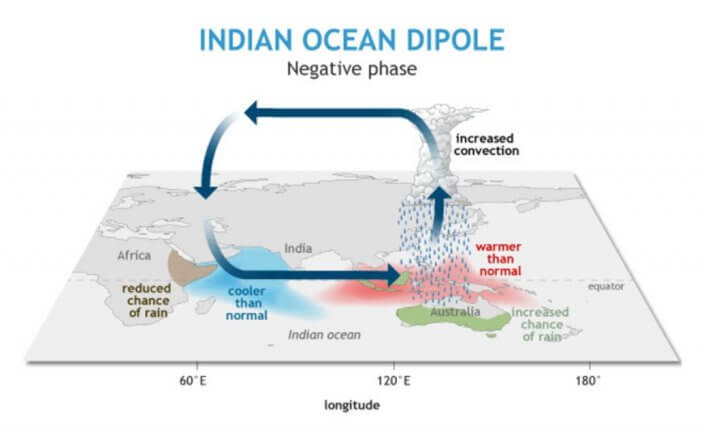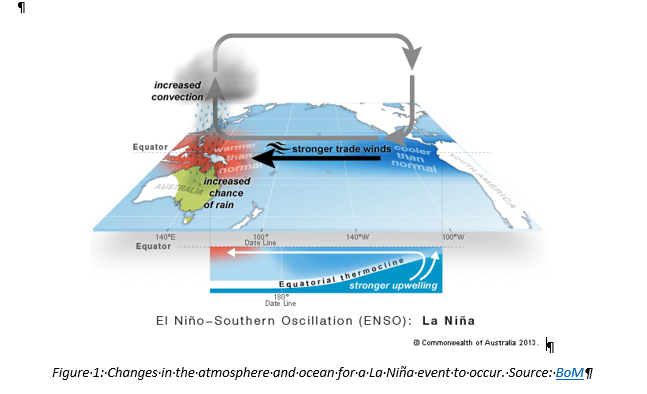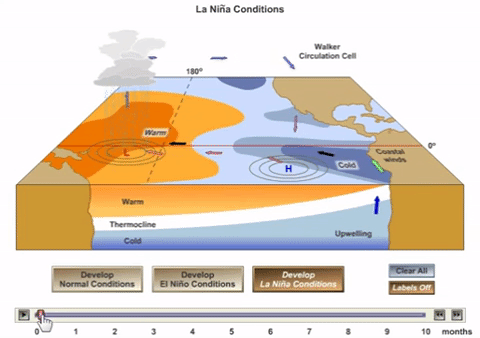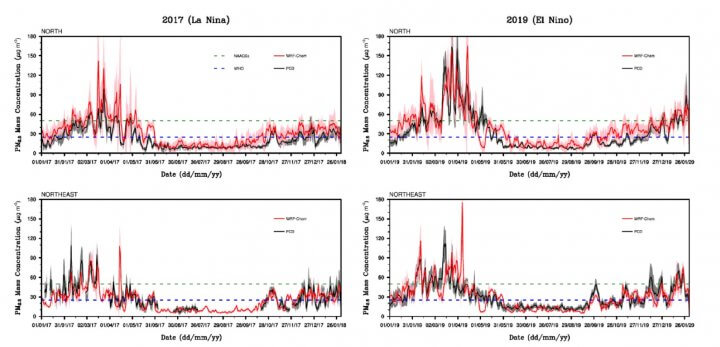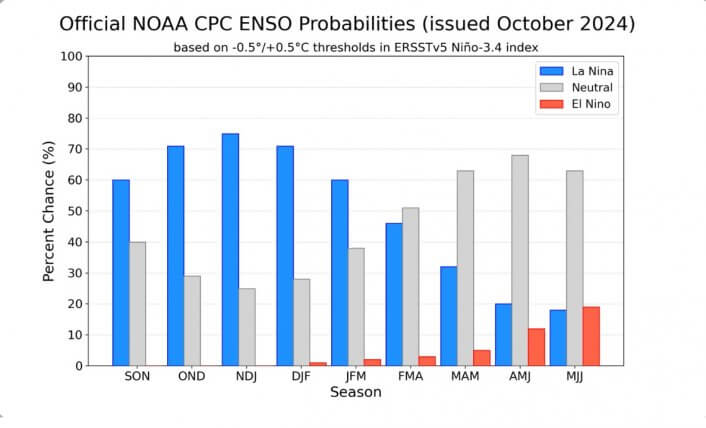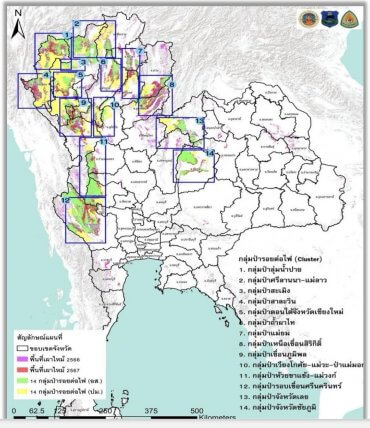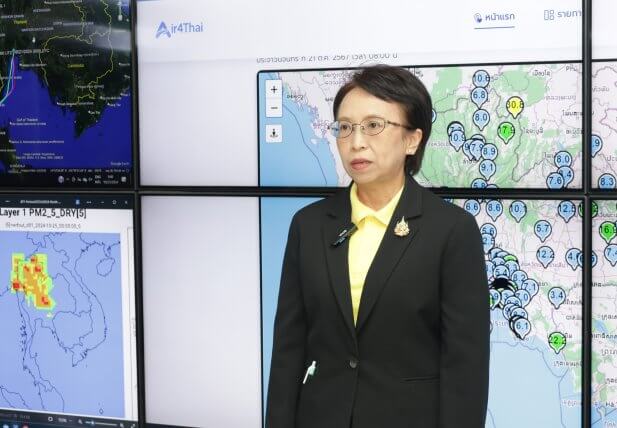
On October 21, 2024, Ms. Preeyaporn Suwanaged, Director General of the Pollution Control Department (PCD), reported on the overall situation regarding forest fires, haze, and PM2.5 compared to last year’s crisis period. The nationwide average of PM2.5 levels over a 24-hour period was measured at 31 micrograms per cubic meter (µg/m³), a decrease of 11%. The number of days with PM2.5 levels exceeding standards were as follows: (1) 17 northern provinces: 129 days (same as last year), (2) Bangkok and its vicinity: 97 days (down 5%),
(3) Northeast region: 113 days (down 2%), (4) Central region: 101 days (down 7%), and (5) Western region: 84 days (up 211%). The upcoming period is expected to see increased particulate matter levels in Bangkok and its vicinity. The government, led by Ms. Paetongtarn Shinawatra (Prime Minister), Dr. Chalermchai Sri-on (Minister of Natural Resources and Environment), and Mr. Jatuporn Buruspat (Permanent Secretary of the Ministry of Natural Resources and Environment), is placing high importance on addressing PM2.5 issues and is intensifying preparations for the situation, ensuring quick communication at national, provincial, and high-risk levels.
Ms. Preeyaporn said that the Ministry of Natural Resources and Environment has developed “Measures to Address Forest Fires, Haze, and Particulate matter Situations for 2025.” The National Environment Board approved these measures and management mechanisms in a meeting on Wednesday, October 16, 2024. The measures for 2025 will be driven through a three-tiered management mechanism: national, regional, and provincial. The operational actions include:
- Preparation Phase: Creating a Risk Map for burning areas, developing an action plan for forest fire management by timeframe, developing a plan for managing fuel sources, and gathering data on high-risk farming areas and farmers by province.
- Fire Management in Conservation Forests and National Reserves: Setting up checkpoints, observation points, and risk areas, managing fuel, restricting access to forest areas, and promoting community forest utilization without burning, including state land agricultural areas, and emphasizing a shift from monoculture planting.
- Agricultural Fire Management: Registering farmers who need to use fire and managing fires in agricultural areas as necessary and controlled. Controlling burning sugarcane before it reaches factories, and supporting farmers in transitioning production methods and providing benefits for those who do not burn.
- Particulate Matter Control in Urban Areas: Issuing prohibitions on large trucks entering urban areas during crises, promoting public transport, reducing public transport fares, accelerating the transition to electric buses, monitoring smoke-emitting vehicles and construction sites, and strictly enforcing factory regulations while controlling illegal burning in communities and along roads.
- Transboundary Haze Management: Promoting the production and trade of non-burning agricultural products, holding ministerial discussions before the haze season, and establishing monitoring and command centers for fire control in neighboring countries.
- Overall Management: Accelerating budget requests for support, providing incentives for the private sector, enhancing law enforcement, designating nuisance control areas, declaring disaster relief zones for PM5 victims, implementing a Work from Home policy, intensifying public health measures, and enhancing communication and public awareness at national, provincial, and high-risk levels.
The goal is to reduce burning areas in forests by 25% and manage 14 clusters of large forest areas, reducing agricultural burning by 10-30%. Particulate matter from vehicles and factories in urban areas will be controlled to ensure 100% compliance with laws and regulations, aiming to reduce the average PM2.5 level by 5-15% and keeping the 24-hour PM2.5 average below health-impacting levels, while also reducing the number of days with particulate matter exceeding standards by 5-10%.
Ms. Preeyaporn emphasized that to prepare for the situation in Bangkok and its vicinity, relevant agencies must integrate their operations according to these measures, particularly in controlling particulate matter emissions from vehicles, industries, and burning in communities, which are major sources of pollution. This includes promoting and enforcing laws and preparing public health measures, Work from Home policies, and public communication to alert citizens. She urged the public to closely monitor particulate matter levels through the Air4Thai website and application.
Dr. Sakda Tridech, Director of Air Quality and Noise Innovation Subdivision, Air Quality and Noise Management Division, provided insights into the particulate matter situation for 2025, stating that the National Oceanic and Atmospheric Administration (NOAA) predicts that from September to November 2024, the transition into a “La Niña” phase will bring above-average rainfall to the western Pacific and Thailand. This phenomenon is expected to last until March 2025, potentially mitigating biomass burning spread compared to the “El Niño” phenomenon (which causes drought). Combined with the implementation of the measures for 2025, significant sources of pollution are expected to be managed effectively, leading to an improved and less severe particulate matter situation compared to early 2024.
However, in the immediate future, Thai Meteorological Department has assessed that after October 23, 2024, northern and northeastern Thailand will experience reduced rainfall, coupled with a cold air mass moving into these regions. This will likely result in increased particulate matter levels in Bangkok and its vicinity from October 24 to 27, 2024, due to stagnant air conditions preventing particulate matter from dispersing. The general public and at-risk groups can monitor the situation through the Air4Thai application and the Facebook page of Center for Air Pollution Mitigation (CAPM) for accurate updates to help plan outdoor activities appropriately.

